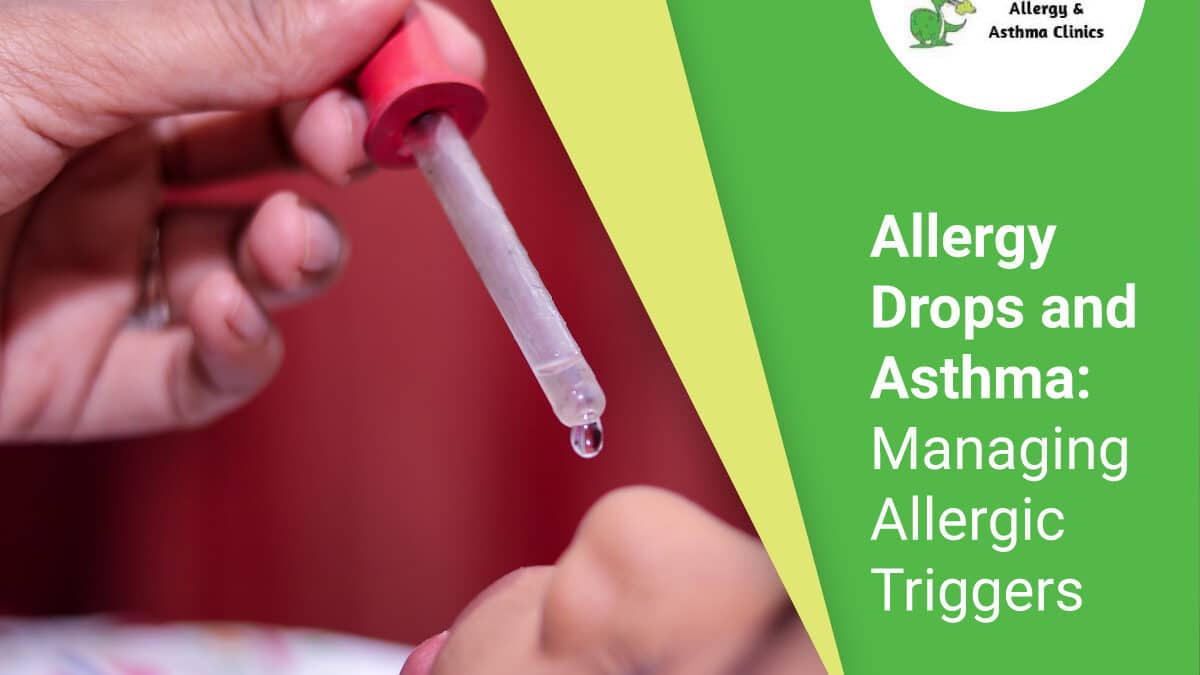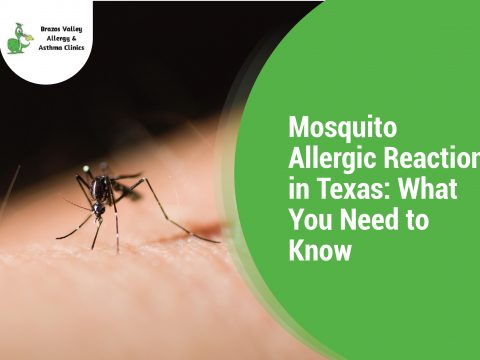- 979-485-9287
- office@bvallergy.com
-
 979-251-7804
979-251-7804
Allergy Drops and Asthma: Managing Allergic Triggers

Texas Ragweed Allergies: Survival Guide to Managing Allergies
September 22, 2023
Understanding Chronic Sinusitis: Causes, Symptoms, and Diagnosis
October 19, 2023To tackle asthma and allergies head-on, you need a deep understanding of their connection. These conditions often coexist, posing a significant health threat to those affected. But there’s a game changer in allergy and asthma care: allergy drops. And it might be the long-term remedy you’re looking for.
Here’s everything you need to know about allergy drops, their efficacy, and their importance to your asthma management strategy.
Allergy Drops: A Lifesaver for Allergies and Asthma Sufferers
Allergies and asthma are closely intertwined. Allergic reactions can trigger asthma symptoms, leading to difficulty breathing, coughing, and wheezing. These symptoms often result from exposure to common allergens like pollen, dust mites, pet dander, and mold. For individuals with allergy and asthma symptoms, managing both conditions can be daunting; that’s where allergy drops offer a convenient advantage over traditional allergy management.
Traditional Allergy Management vs. Sublingual Allergy Drops
Allergy management has traditionally relied on antihistamines, decongestants, and avoidance strategies. While these methods provide temporary relief, they often fail to address the root cause of allergies. Fortunately, modern medicine provided us with a safe and clinically effective treatment option in the form of allergy drops, or sublingual immunotherapy (SLIT).
How Allergy Immunotherapy Drops Work
Allergy drops work by desensitizing your immune system to specific allergens. Instead of merely alleviating symptoms, they tackle the underlying problem by gradually training your immune system to tolerate allergens. This process involves exposing your body to minuscule amounts of the allergen, allowing your immune system to adapt without triggering a full-blown allergic reaction.
Benefits of Allergy Drops
Allergy drops provide lasting protection against allergic triggers that could lead to an asthma attack. Moreover, this customizable approach enhances efficacy and convenience. The top benefits of allergy drops include:
- Long-Term Relief: Unlike symptomatic relief from antihistamines, allergy sublingual drops offer a long-lasting solution. Many individuals experience a significant reduction in allergy and asthma symptoms over time.
- Reduced Medication Dependency: With the consistent use of allergy drops, some patients can reduce their reliance on allergy and asthma medications, minimizing potential side effects.
- Customized Treatment: Allergy drops are tailored to your allergens, ensuring precise and effective treatment.
- Convenience: Administering allergy drops at home is convenient, reducing the need for frequent clinic visits.
Incorporating Allergy Drops into Your Asthma Management Plan
Incorporating allergy drops into your asthma management plan significantly reduces allergy and asthma symptoms. With proper guidance and personalized treatment, you can take significant steps toward regaining control over your health.
Consultation with an Allergist
It’s crucial to consult with an allergist to learn about allergy shots. They will assess your allergies, asthma severity, and history to create a personalized treatment plan.
Comprehensive Allergen Testing
Allergen testing is vital in identifying your specific triggers. Your allergist will conduct tests to pinpoint the allergens causing your symptoms, allowing customized allergy drops to play their part. The different types of allergy testing are:
1. Skin Test
During the test, your allergist exposes a small amount of the suspected allergen on the skin, usually on the forearm or back. Then, the skin is scratched to allow the allergen to penetrate the surface. If the person is allergic to the substance, a red, raised bump called a wheal will appear at the test site within 15–20 minutes.
2. Patch Test
Allergy patch tests are a type of testing that involves applying small amounts of suspected allergens to the skin on the patient’s back. The allergens are then covered with adhesive patches and left in place for two days. After two days, your allergist removes the patches to examine the skin for signs of an allergic reaction.
3. Blood (IgE) Test
An IgE test is another way of identifying allergies. The test measures the levels of immunoglobulin E (IgE) antibodies in your blood. If you have higher levels of IgE antibodies, it indicates that you are allergic to a particular substance.
4. Challenge Tests
During a challenge test, a person is given a small amount of the suspected allergen through inhalation, ingestion, or injection. The person is then closely monitored for any signs of an allergic reaction.
Administration and Monitoring
Once you begin allergy drop treatment, you’ll self-administer them daily. Your allergist will monitor your progress to ensure the therapy remains effective and safe.
Learn as Much as You Can About Your Condition
Knowledge is your most potent weapon in the battle against allergy-induced asthma. Understanding the link between these conditions and the potential of allergy drops will take you a long way toward a more allergy-free life. Incorporate allergy drops into your asthma management plan under the guidance of a skilled allergist, and you’ll take significant steps toward regaining control over your health.
The Future of Allergy and Asthma Management
Research and advancements in asthma management are continually evolving. Ongoing studies aim to improve the effectiveness and accessibility of allergy drops. New developments may lead to even more efficient treatment options in the future.
Frequently Asked Questions (FAQs)
Q: Are allergy drops suitable for children with asthma?
Yes, allergy drops can be a safe and effective treatment option for children with asthma and allergies. Make sure to consult with a pediatric allergist for personalized recommendations.
Q: How long does it take to see results with allergy drops?
The timeline for seeing results with allergy drops can vary from person to person. Some individuals may experience improvement within a few months, while others may take longer.
Q: Can I stop using other asthma medications while taking allergy drops?
Follow your healthcare provider’s recommendations. Sometimes, allergy drops may reduce the need for other asthma medications. Never discontinue the process without medical supervision.
Q: Are there any side effects associated with allergy drops?
While allergy drops are generally well-tolerated, some individuals may experience mild side effects like itching or swelling under the tongue. These side effects usually subside with continued use.
Q: Where can I access allergy drop therapy?
Please consult with an allergist to determine if allergy drops are a suitable treatment option for you.
Boost Your Body’s Natural Defenses and Improve Your Quality of Life!
Searching online for “allergy drops immunotherapy?” Look no further because you’re on the right page!
At the Brazos Valley Allergy & Asthma Clinics in the south-central Texas region, we initiate your journey towards safe and effective allergy and asthma management by performing accurate allergy testing, ensuring you get the appropriate treatment you deserve. Our board-certified allergists are committed to helping you achieve an allergy-free life that you can enjoy for many years.
Click this link to request an appointment that works for you.




